August 29, 2022 - September 23, 2022
Compound Subjects
Hale Ekinci
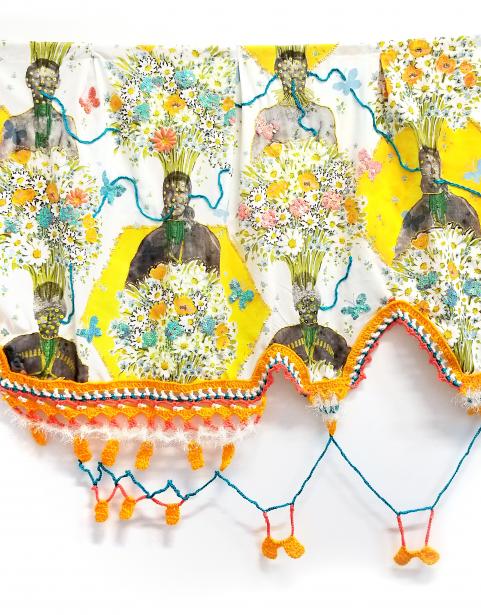
Student Services close at 2:30 p.m. on Monday, December 8. NEW: Pedestrian bridge closed due to damage.

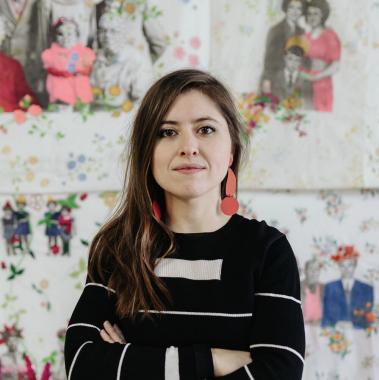
Guest Artist
Collaging together fiber techniques, found textiles, and images from family archives, the exhibition explores phases of acculturation, immigrant identity, and ideas about gendered labor. My decorative fringes are influenced by the Middle Eastern tradition of oya (lace edging on a headdress) and its use of symbolic patterns that serve as a secret language between women to express personal sentiments that must otherwise remain private. Adopting these methods of embellishment and encoding, I create adorned, intercultural portraits framed with oya on bedsheets.
Compound Subjects is composed of embroidery paintings and hanging fiber sculptures. Using a solvent, I transfer old photos from my Turkish heritage, my Midwestern husband, and found immigrant sources onto household textiles. I then layer embroidery and painting over them to further muddle the identities. The domestic surfaces such as the used, patterned bed sheets hold personal and bodily history invoking feelings of home and intimacy. By utilizing found materials and fiber crafts, I also question the value and worth assigned to materials and women’s work. The draped fabrics are framed with colorful crochet, where I crudely mimic traditional oya styles or make up new motifs like the “green card” edging reflecting my contemporary reality within the coding.
The fiber sculptures resemble embroidery paintings; instead of being stretched on rectangular frames, they are stretched on three-dimensional shapes (i.e. outlines of a home) and drop from the ceiling like clothing on a hanger. Visitors walk through hanging layers of fiber sculptures to see the embroidered paintings of different shapes on the walls.
My exhibitions often start conversations about heritage and turn into spaces of cultural exchange. I believe it is a timely exhibition that supports transforming human relations, engaging the community, and examining boundaries.
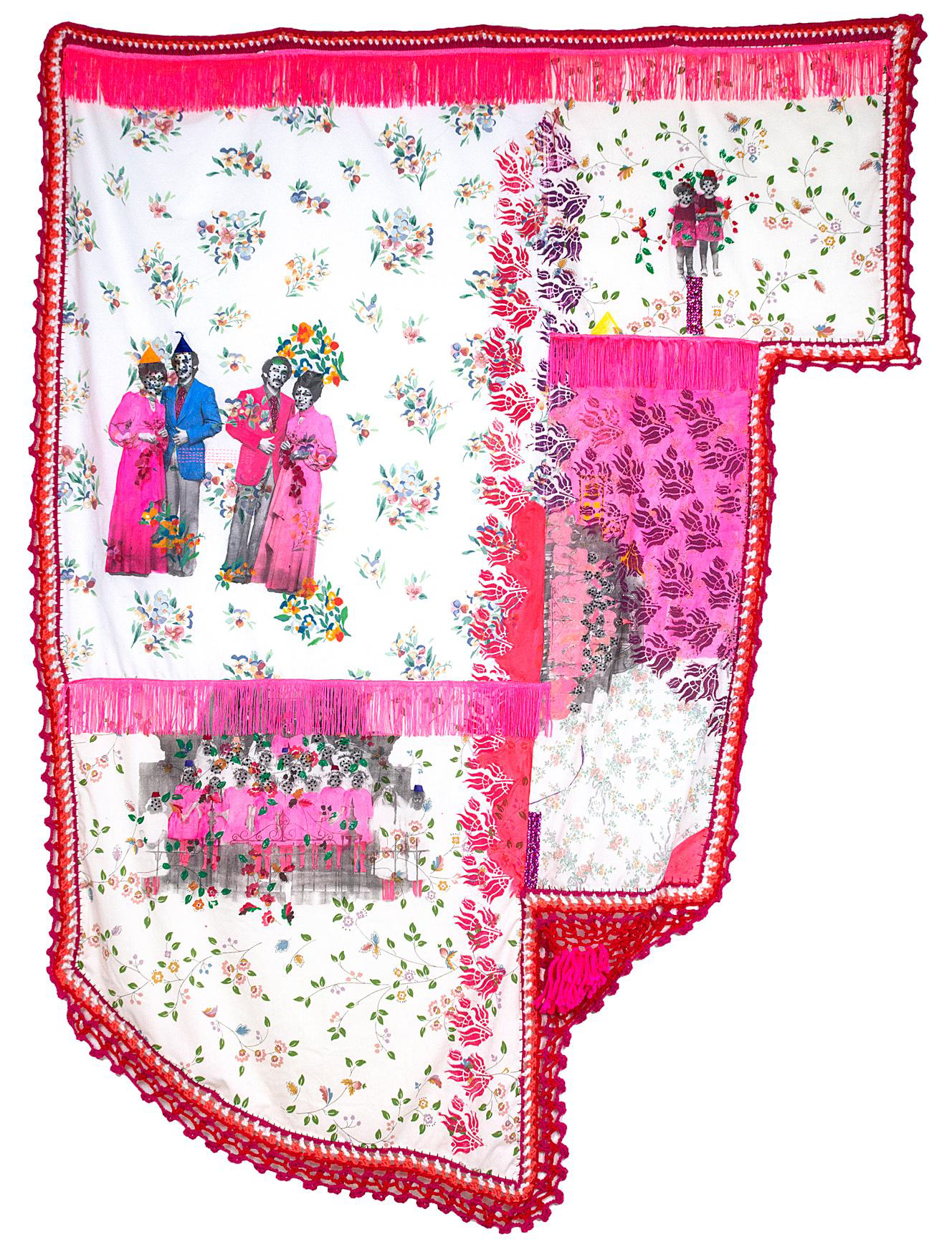
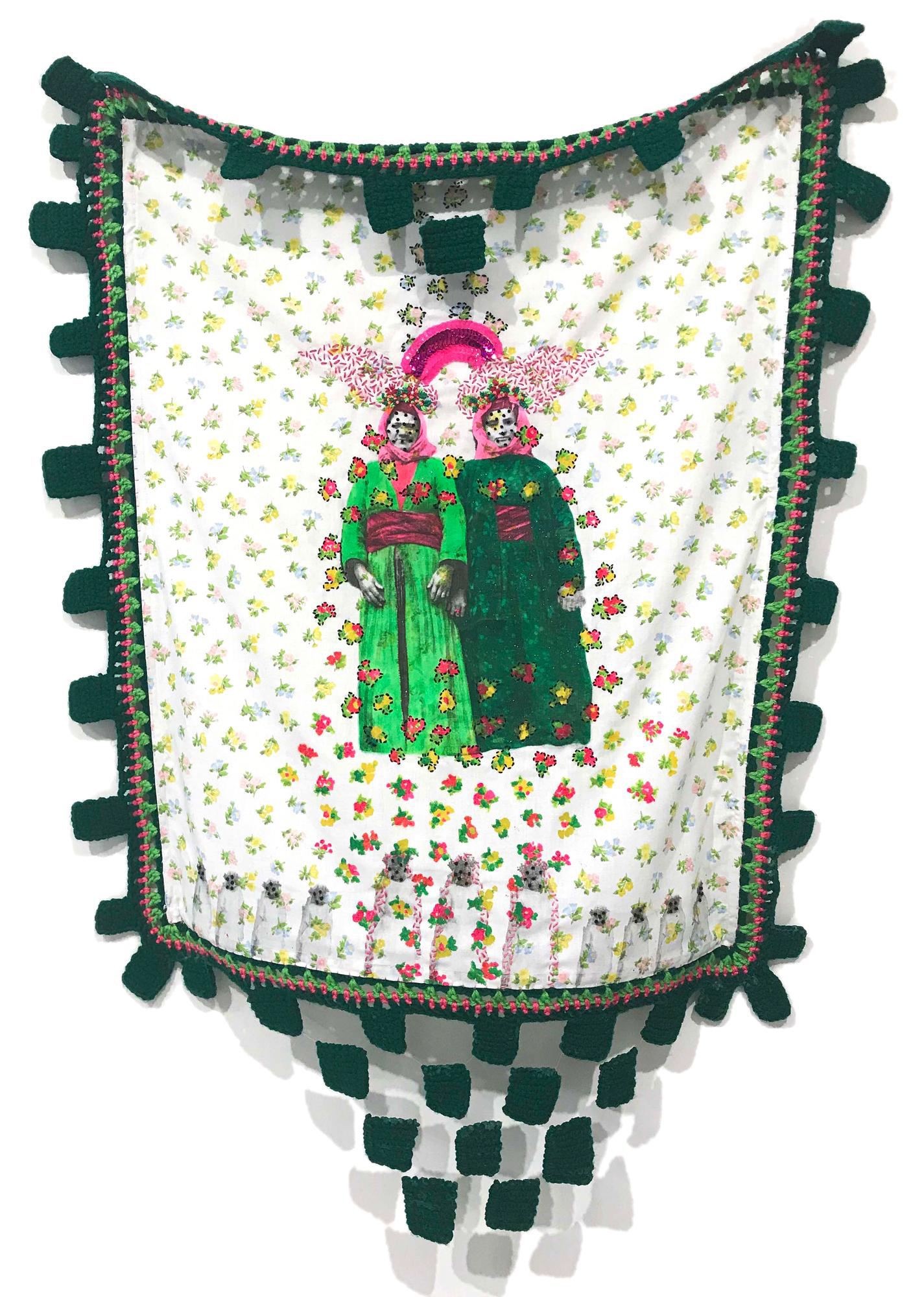
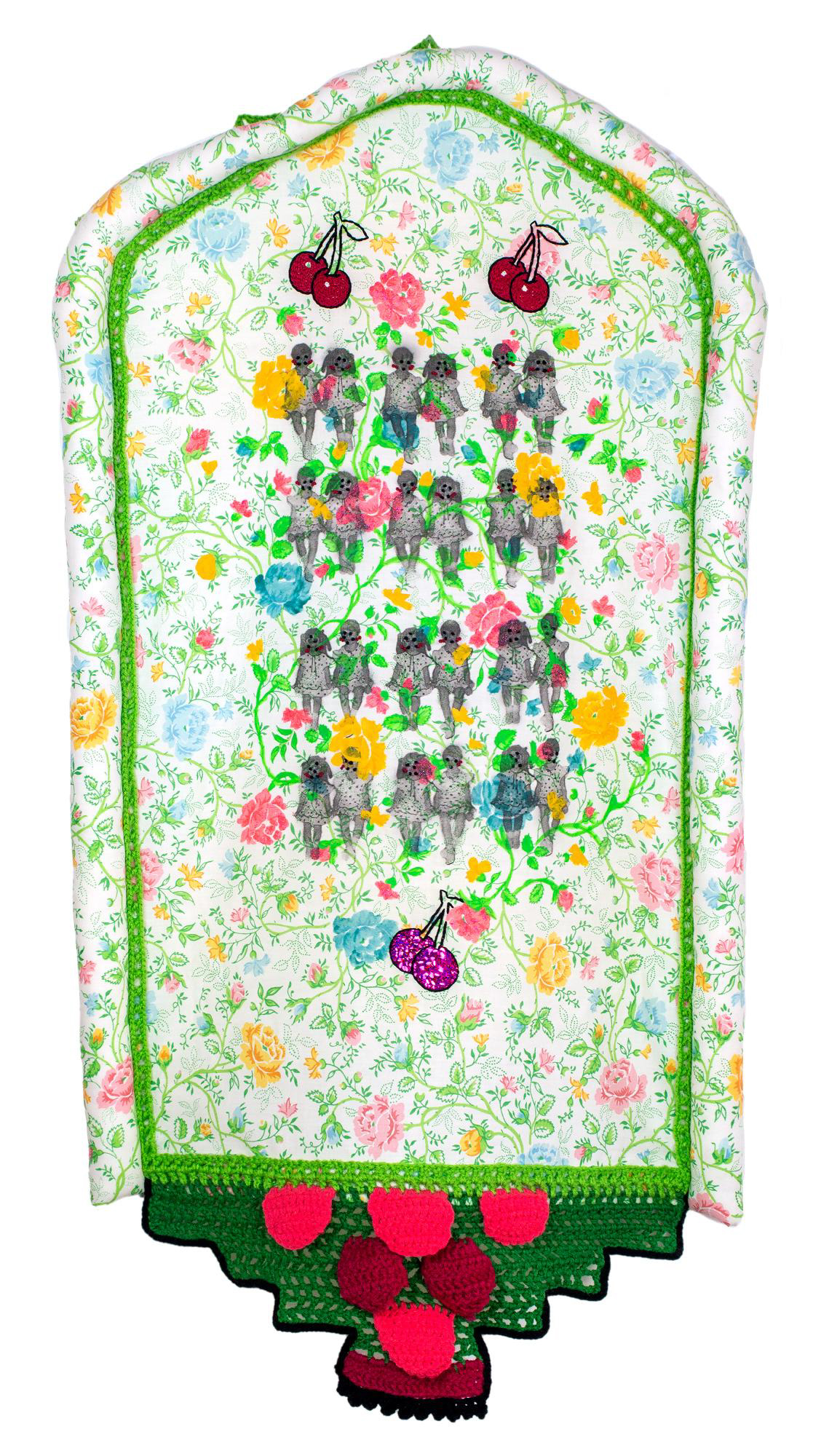
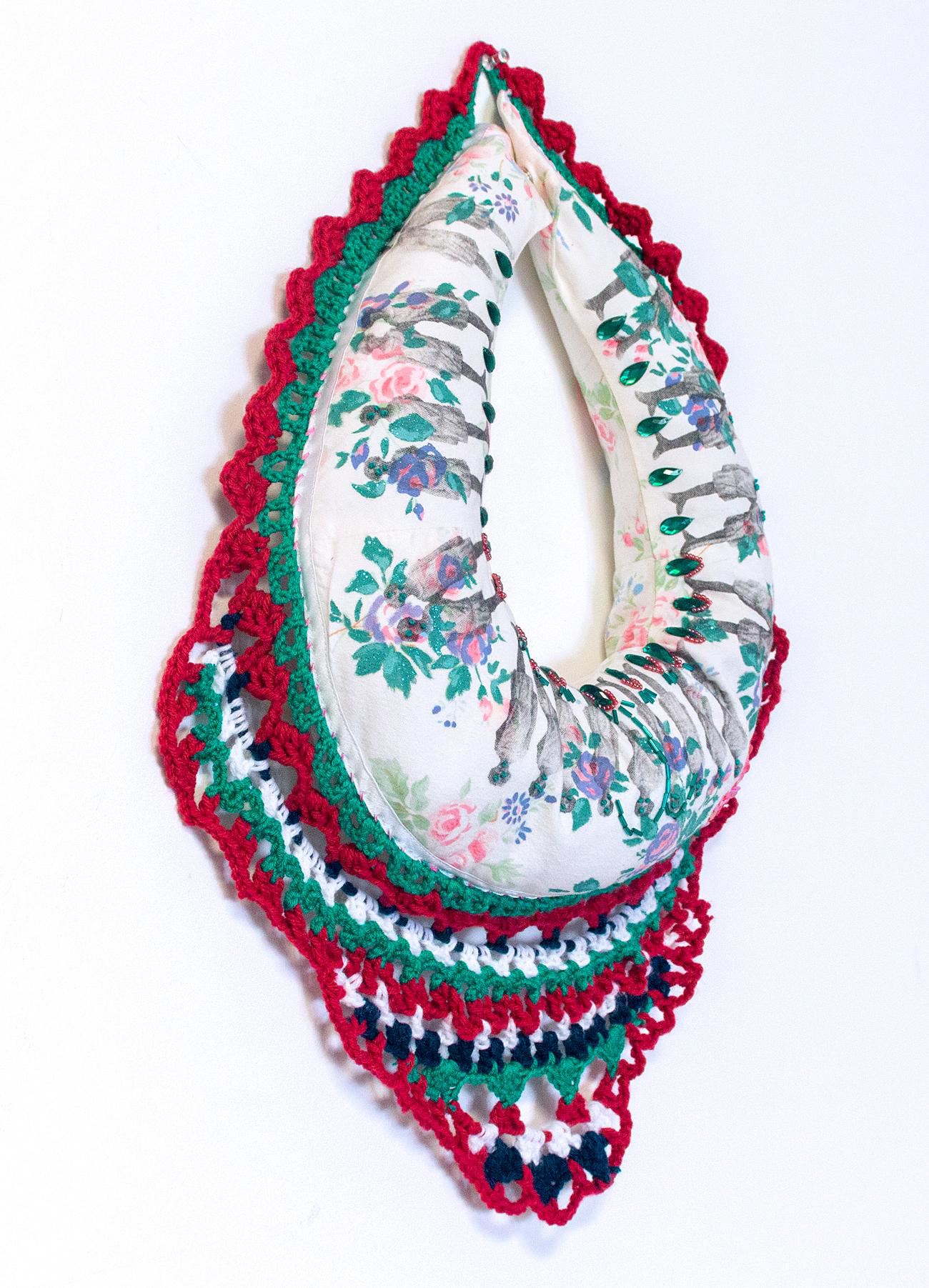
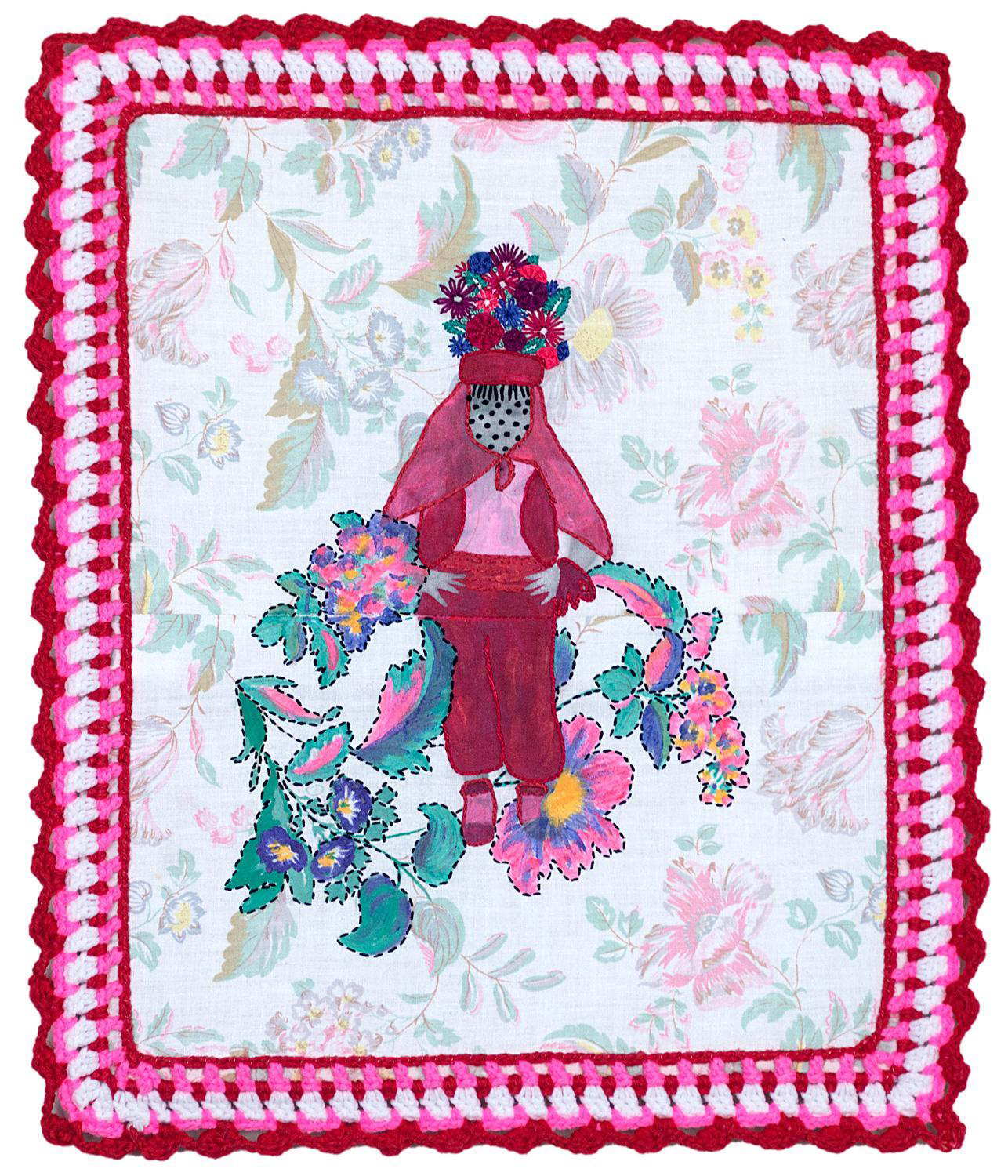
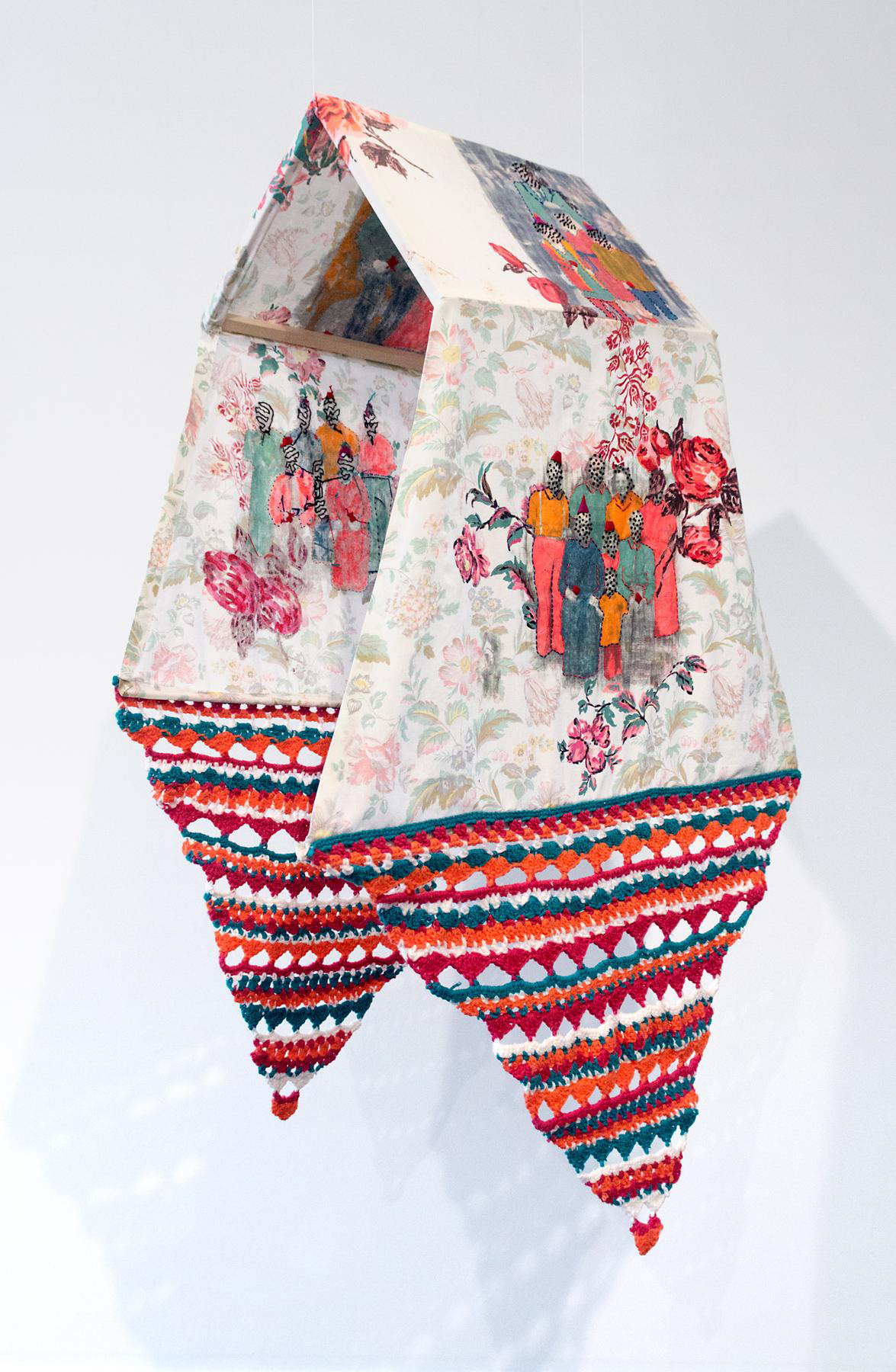
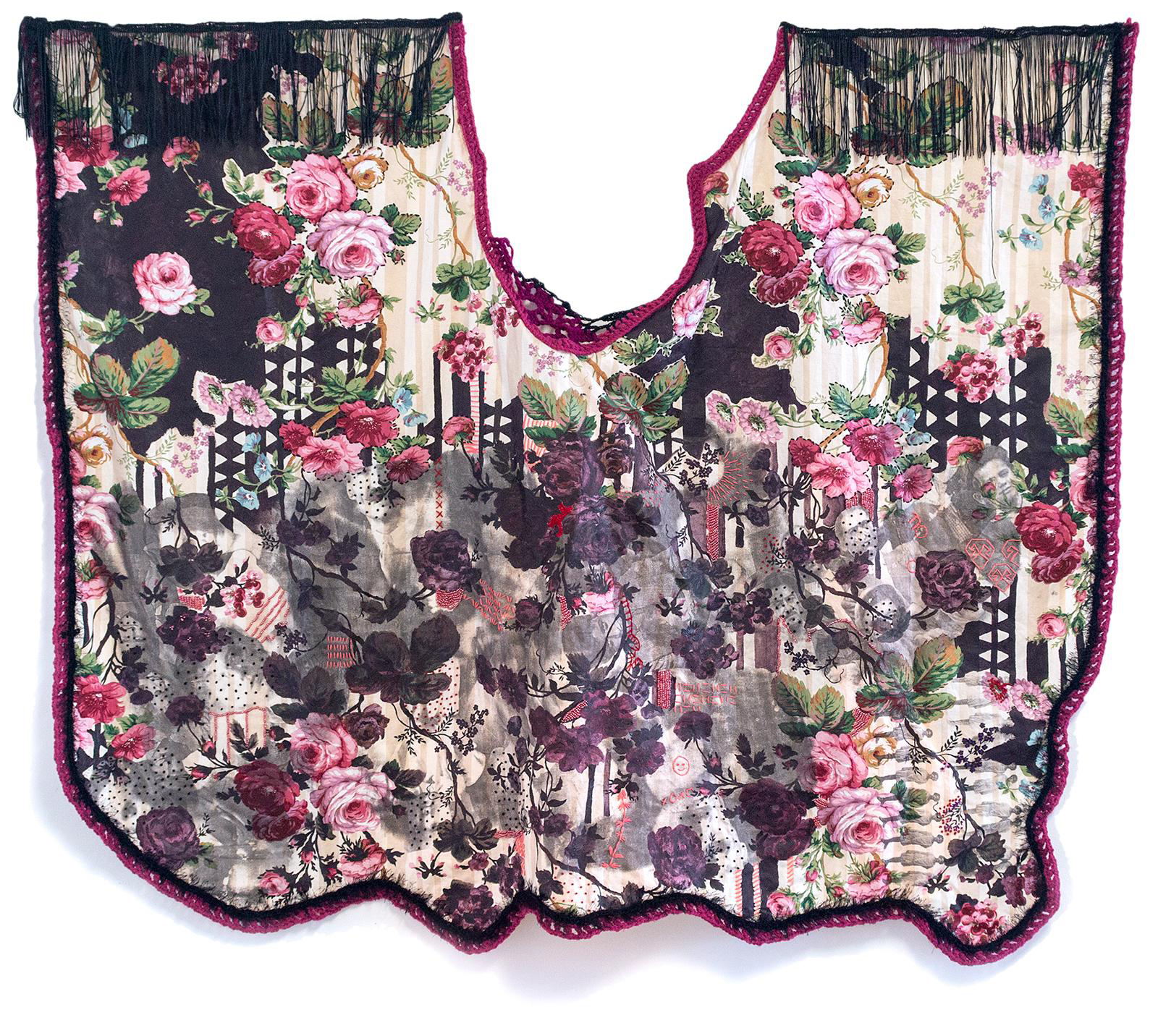
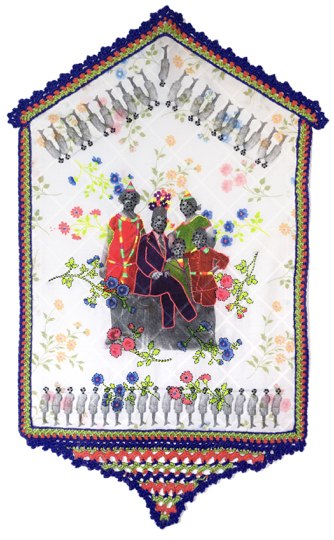
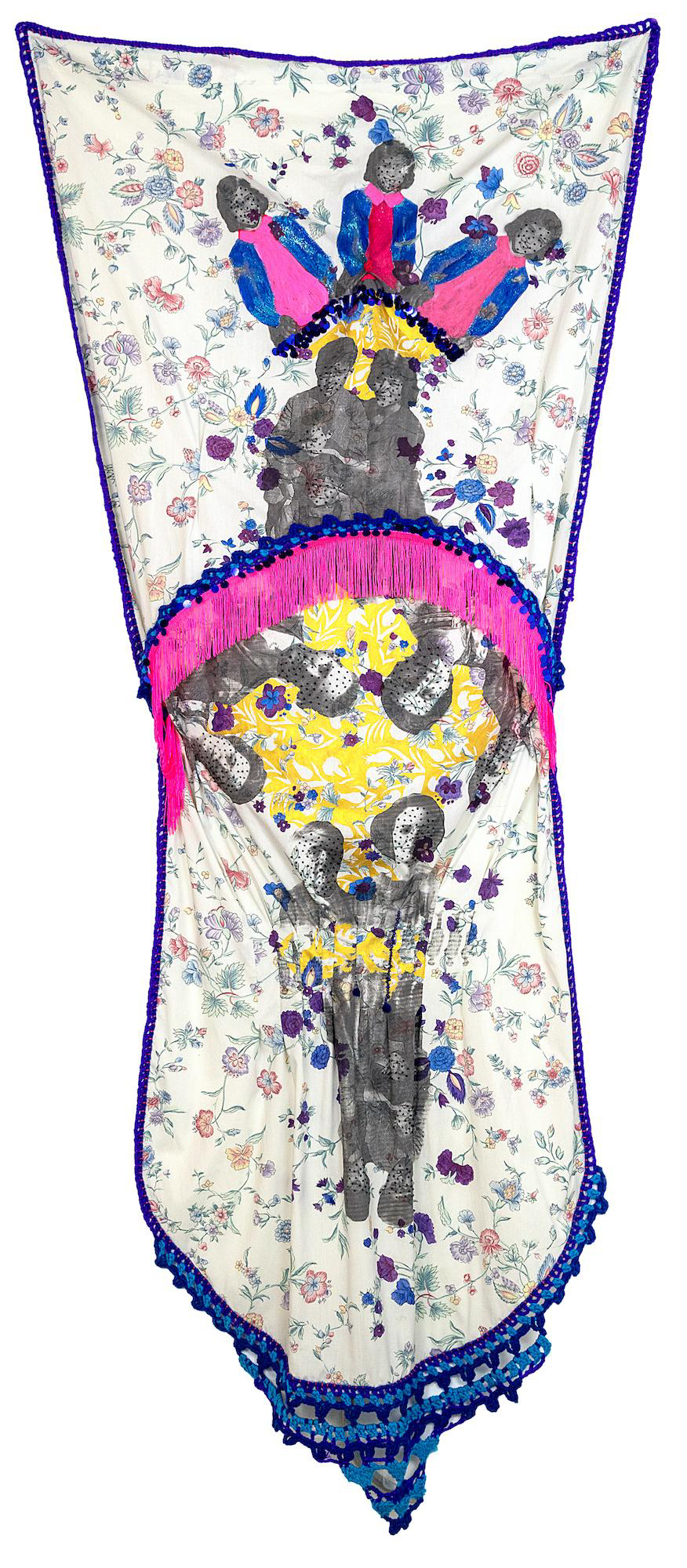
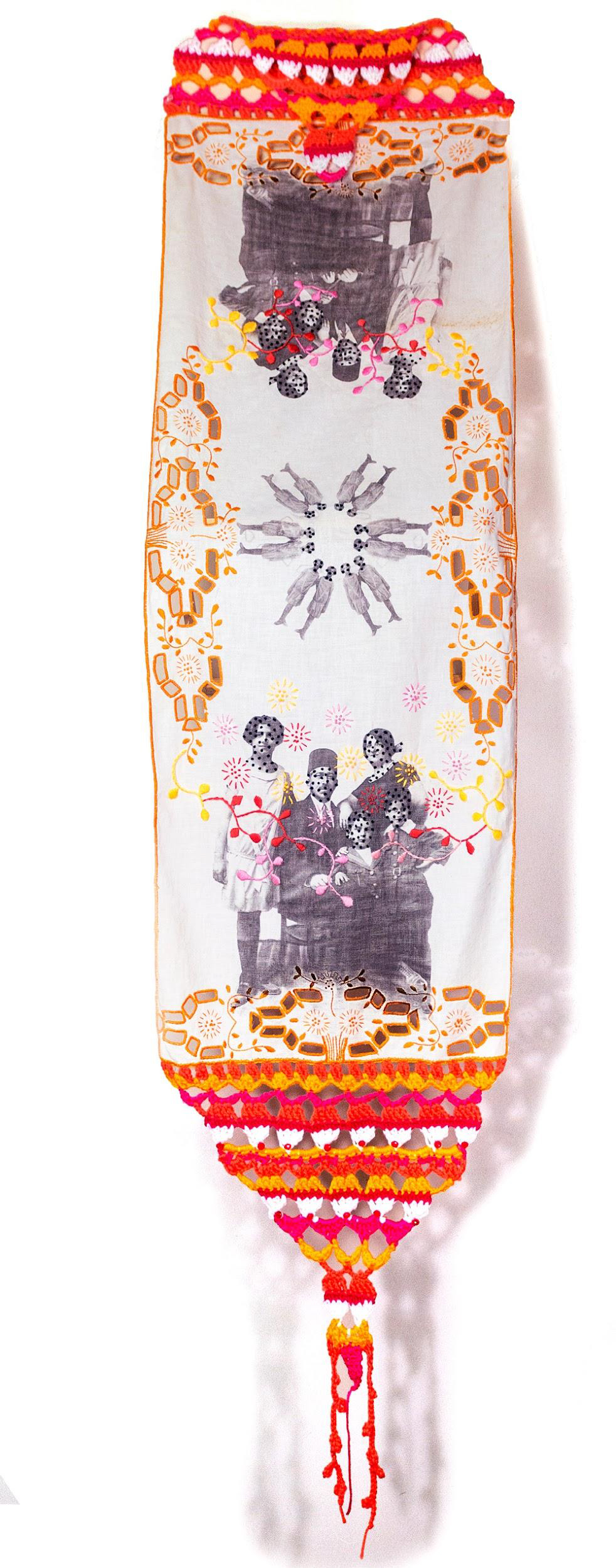
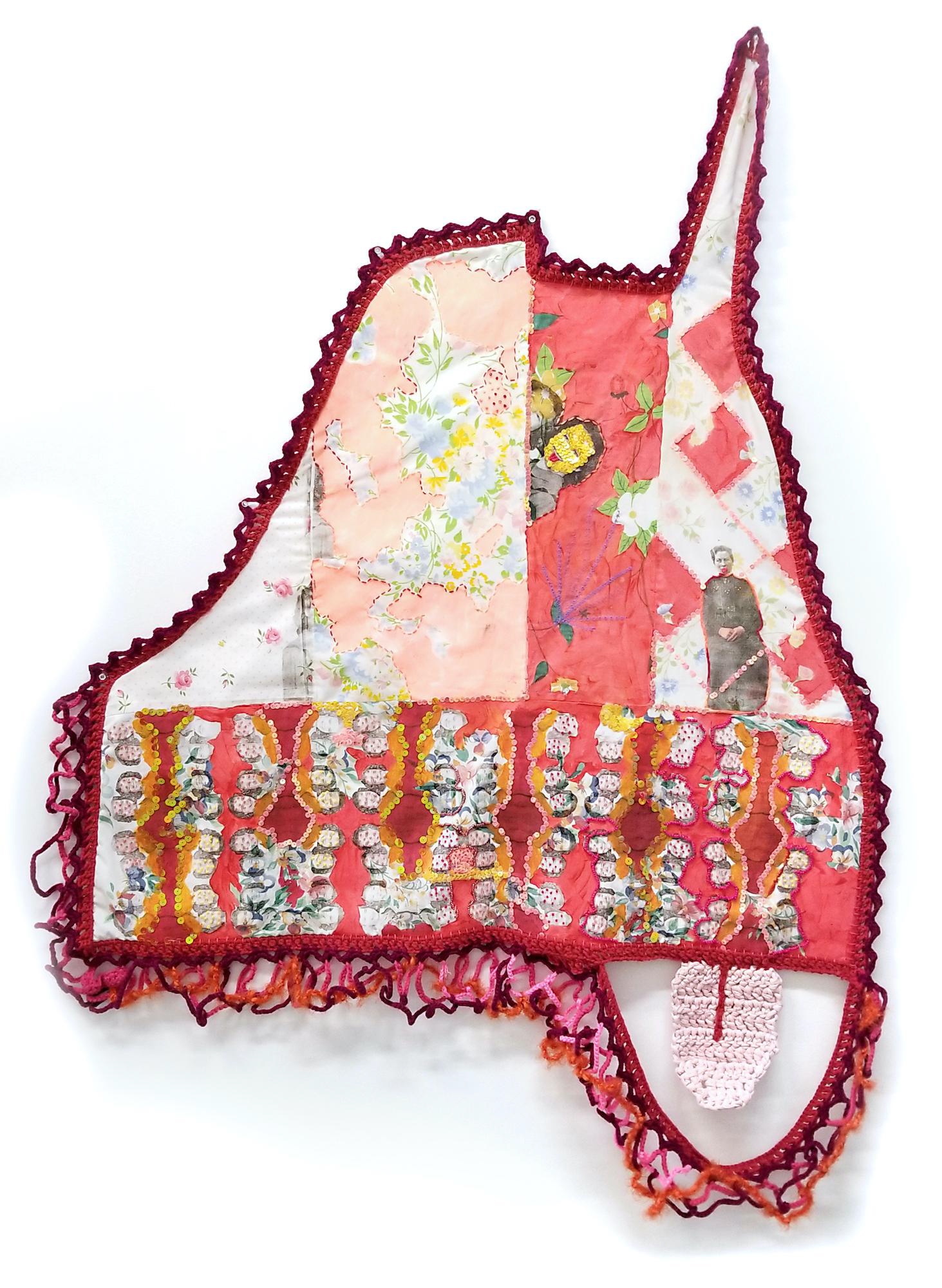

Duvet | Solvent Photo Transfer, Acrylic, Sequins, Embroidery Floss, Crochet Yarn, Fringe, and Block Print on Found Quilted Bedsheets | 58” x 80”

Marry me so I can stay | Solvent Photo Transfer, Acrylic, Sequins, Embroidery, Crochet Edging, Plastic Boning, and Fishing Line on Bedsheet | 45" x 60"

Lottery | Solvent Transfer, Acrylic Paint, Embroidery Floss, Sequins, Polyfill, and Yarn Crochet on Found Bedsheet | 22” x 42”

Travel Pillow Collar Necklace | Solvent Photo Transfer, Acrylic, Glass Beads, Embroidery Floss, Sequins, Polyfill, and Crochet on Found Nightgown Collar | 18" x22" x 4"

Fake Folk Dancer | Solvent Photo Transfer, Embroidery Floss, Crochet, and Acrylic on Found Bedsheet Stretched on Wood Frame | 16” x 20”

New House | Solvent Photo Transfer, Embroidery Floss, Yarn Crochet, Acrylic Paint on Bedsheet, and Wood | 17” x 24” x 50”

Who What Where Are We From? | Solvent Photo Transfer, Acrylic, Embroidery Floss, Yarn Crochet, and Glass Beads on Fabric | 52” x 44”

Untitled Easterners | Solvent Photo Transfer, Embroidery Floss, Crochet, and Acrylic on Found Bedsheet | 24” x 42”

On The Fringe | Solvent Photo Transfer, Acrylic Paint, Embroidery Floss, Sequins, Glass Beads, Fringe, Plastic Boning, and Yarn Crochet on Found Bedsheet | 34” x 87”

Cupcake | Solvent Transfer, Embroidery, and Crochet on Found Bedsheet | 15.5" x 39"

Sticking Tongue Out | Solvent Photo Transfer, Acrylic Paint, Embroidery Floss, Sequins, Thread, and Yarn Crochet on Found Bedsheet | 52" x 38"
